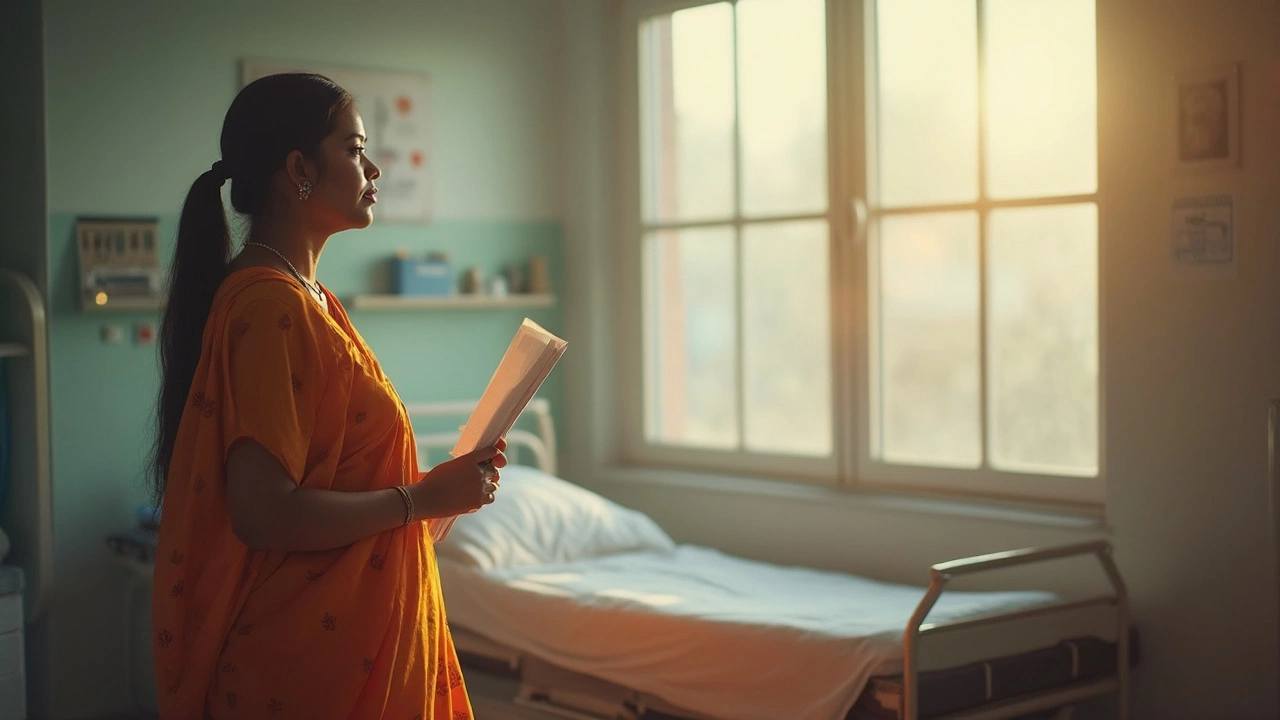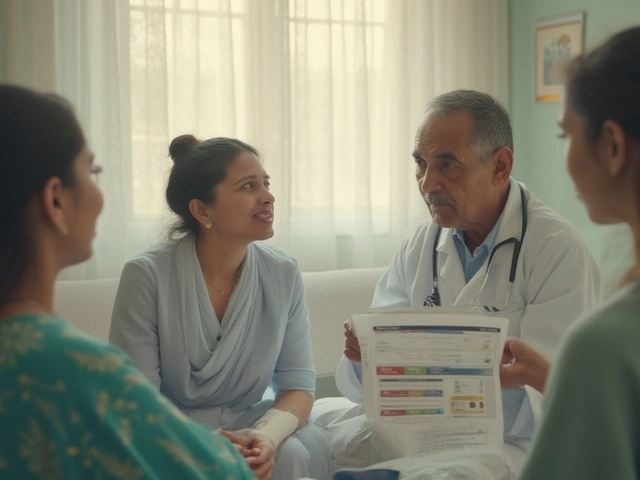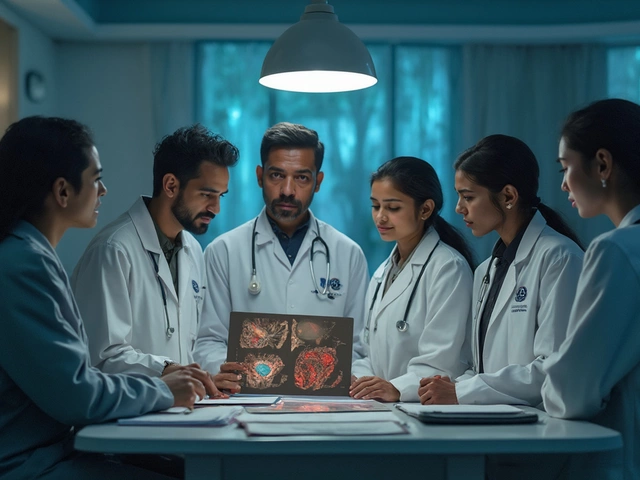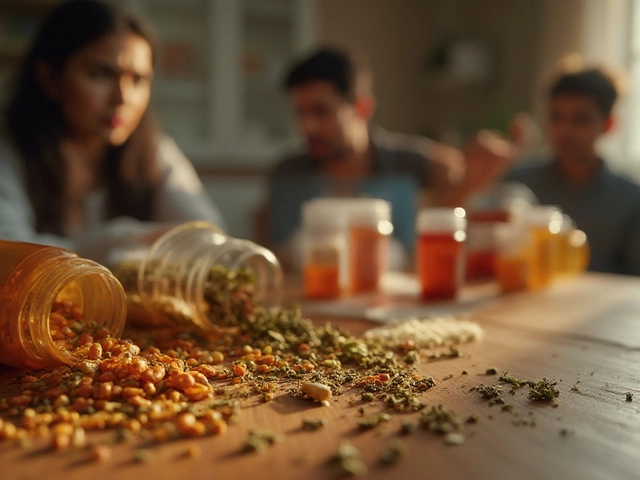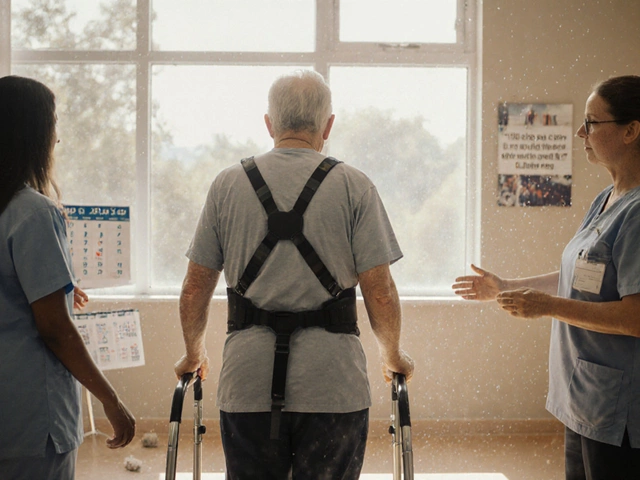Some folks think “no cure” means nothing can be done, but that's not true at all. With cancer, not every type ends with a simple fix — and that can be hard to wrap your head around. An incurable cancer doesn’t mean doctors just throw up their hands. It means, with the best science we have, they can’t completely get rid of it. But they can treat it, slow it down, and help people live well — sometimes for years.
If you or someone you care about ever hears the words “incurable cancer,” it hits hard. You might want straight answers, not just hopeful slogans. So, let’s sort out what “incurable” actually means, which cancers fall in this group, and what you can do if you hear this kind of diagnosis. No one wants sugar-coating — just the honest facts and some practical steps to make the journey a little easier.
- What Does 'No Cure' Really Mean?
- Cancers Still Considered Incurable
- Why Some Cancers Can't Be Cured
- How Patients Manage Incurable Cancer
- Living Well with an Incurable Diagnosis
What Does 'No Cure' Really Mean?
This phrase gets tossed around a lot, but it’s often misunderstood. When doctors say a type of incurable cancer or terminal cancer has "no cure," they mean there’s no treatment that will get rid of it for good. The cancer might shrink, or even go away for a while, but it almost always comes back at some point. Modern medicine just can’t make it vanish for life.
That’s different from cancers they call “curable,” where treatment can wipe out all signs of the disease and the person can go years—sometimes forever—without it coming back. With incurable cancers, even the best chemo, targeted pills, surgery, or immune therapy can only control things for a while.
Here’s what “no cure” usually looks like in practice:
- Treatments focus more on controlling cancer, not erasing it.
- The goal is often to help the person live longer and feel better, not to make them cancer-free.
- Doctors keep an eye on quality of life—reducing symptoms and side effects is just as important as shrinking tumors.
And here’s a fact that surprises people: Most people with incurable cancer actually live months, years, or even decades with treatments. The focus shifts to “chronic management," sort of like with diabetes or heart disease. The mindset changes, and so do the conversations with your medical team. In big cancer centers, as many as 6 out of 10 people getting treatment are dealing with advanced or incurable cancers, not early-stage “all gone” cases.
So, zeroing in on a cure isn’t always the point. It’s about staying ahead of the disease, handling the symptoms, and holding onto what matters most day to day.
Cancers Still Considered Incurable
Here’s the honest truth: some cancers, especially when found late or after they’ve spread, just don’t have a guaranteed cure with today’s medicine. Doctors can treat them and even beat them back for a while, but the word “cure” is off the table. These are what most people mean by incurable cancer or terminal cancer.
So, which ones are we talking about? Here are a few big names:
- Advanced pancreatic cancer: By the time most people get symptoms, it’s already spread. Five-year survival rates are low—usually under 12% if it has spread beyond the pancreas.
- Metastatic lung cancer: If lung cancer spreads far from the lungs before it’s caught, it is usually considered incurable. Treatment can shrink tumors, but cure is not realistic.
- Stage 4 brain cancers (like glioblastoma): Even with surgery, chemo, and radiation, these are almost always fatal in the long run, though treatment might extend life or ease symptoms.
- Metastatic melanoma: Melanoma that has moved to other organs is tough to beat. New drugs can help some people live longer, but they’re not cures in most cases.
- Advanced ovarian cancer: This type often comes back after treatment, and cures are unfortunately rare when it’s diagnosed late.
Let’s put some numbers to it, so it’s not just talk. Here’s a quick snapshot for a few of these terminal cancer types:
| Cancer Type | 5-Year Survival Rate (when metastatic) |
|---|---|
| Pancreatic | 3% |
| Lung (non-small cell) | 8% |
| Glioblastoma | 6% |
| Ovarian | 31% |
Every year, treatments get a little better. There are stories of people defying odds. But, as of now, incurable cancer still means medicine can’t promise to get rid of the disease for good. That’s why knowing what’s realistic can help a person plan their next steps.
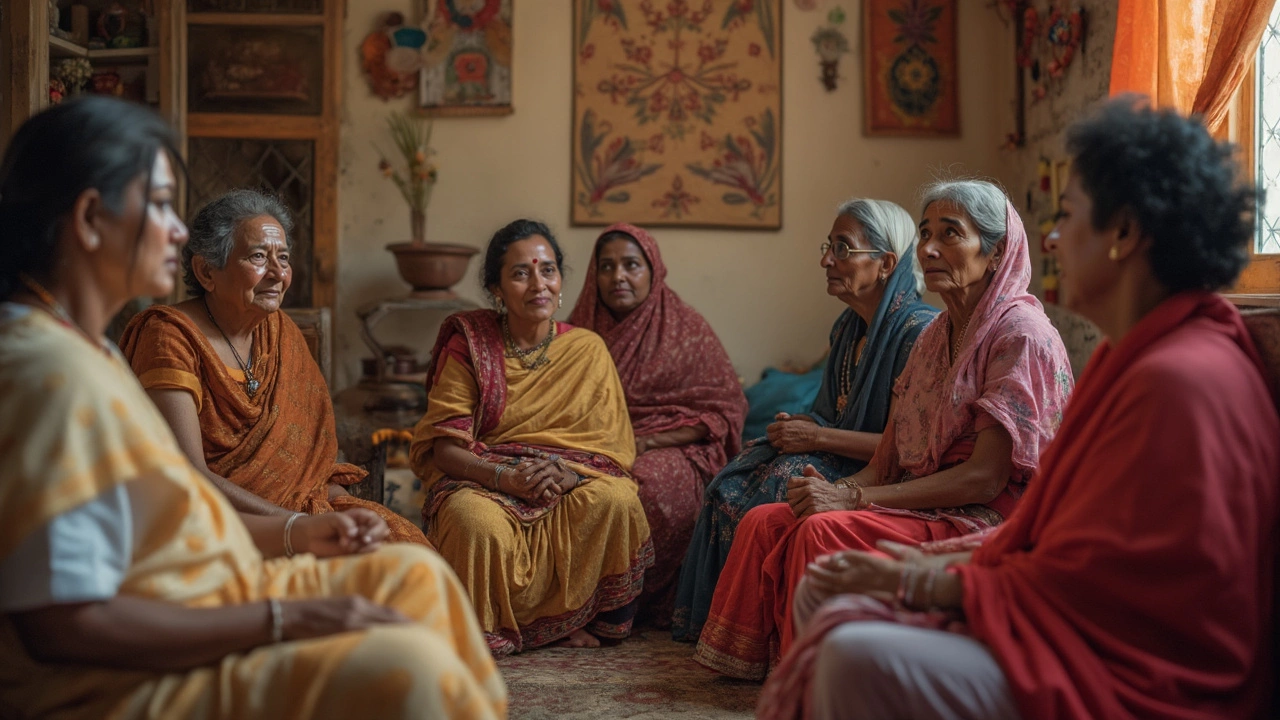
Why Some Cancers Can't Be Cured
The big question is: why can some cancers be kicked, but others stick around no matter what? It comes down to a few tricky reasons. First off, some cancers are already spread—what doctors call 'metastasized'—by the time they're found. Once cancer cells move far from where they started, blasting every last one gets almost impossible.
Another problem is certain cancers just don’t play by the rules. Cancers like pancreatic, brain (like glioblastoma), and some lung cancers grow fast, hide out in hard-to-reach places, or don’t respond much to chemo or radiation. That makes pulling off a cure especially tough. The cells might even outsmart treatments by changing shape or “mutating.”
Here's a neat fact: cancer isn't just one illness. There are over 100 types, all with their own sneaky ways of spreading or dodging the best medicine. Some keep sending out new cancer cells even while you’re getting treated. And let’s not skip the unlucky part—sometimes a person’s body just can’t handle the strongest treatments because of age, other health conditions, or side effects that hit too hard.
- Metastasis: When cancer travels from its original spot to other body parts, treating all of it is much harder.
- Treatment Resistance: Some cancer cells are simply built tough, so they survive chemotherapy and even targeted drugs.
- Late Detection: Cancers found in later stages are way harder to wipe out than those caught early.
- Hard-to-Reach Areas: Tumors that grow in areas surgeons can’t safely get to are usually more difficult to cure.
Check out how common cure rates differ for a few incurable cancer types:
| Cancer Type | 5-Year Survival Rate (Late Stage) |
|---|---|
| Pancreatic | ~3% |
| Lung (Metastatic) | ~8% |
| Glioblastoma (brain) | <5% |
| Liver (Advanced) | <5% |
So when you hear about incurable cancer or terminal cancer, it’s not just one thing going wrong—it’s a mix of how sneaky and stubborn those particular cancer cells are, plus how early the doctors can catch and treat them.
How Patients Manage Incurable Cancer
Getting an incurable cancer diagnosis totally changes the game. But tons of people find ways to live with it and make the most of every day. Doctors talk a lot about "managing" cancer, and that means keeping it under control for as long as possible, not just throwing medicine at it and hoping for the best.
Instead of aiming for a total cure, the goal is to slow the cancer down, shrink tumors if possible, and knock back symptoms so you can function well. Treatments might include:
- Chemo and other drugs to stop cancer from growing or spreading.
- Radiation to shrink tumors that cause pain or block things like your airway or gut.
- Targeted therapy – these newer drugs go after specific cancer "weaknesses." Not every cancer has one, but when it works, it can really help.
- Immunotherapy – tries to boost your own immune system to fight cancer cells.
- Palliative care – this doesn't mean "giving up." It actually helps control pain, side effects, and other stuff that messes with your day-to-day.
Here’s a quick peek at how these treatments can affect symptoms and life quality:
| Treatment | Main Purpose | Common Side Benefit |
|---|---|---|
| Chemotherapy | Slows or stops cancer growth | Can ease pain by shrinking tumors |
| Radiation | Shrinks specific tumors | Relieves pressure or blockages |
| Palliative Care | Boosts comfort and life quality | Reduces emotional stress |
One thing most people don't realize: Palliative care teams can jump in as soon as you get an incurable cancer diagnosis. They work right alongside your main cancer doctor. You don’t have to "give up" treatment to get extra support. It's about better days, not just more days.
Besides medical stuff, folks living with a terminal cancer diagnosis often get pretty good at focusing on what matters most to them. They set routines, keep up with friends, try new hobbies, or travel when energy allows. Support groups (online or in person) can make a big difference. Some people talk with counselors who "get it" and can help with the emotional rollercoaster.
The main thing to remember: Living with an incurable cancer isn't just about managing symptoms. It's also about managing your time, goals, and mental health — and yes, sometimes slowing down enough to enjoy good moments in between treatments.
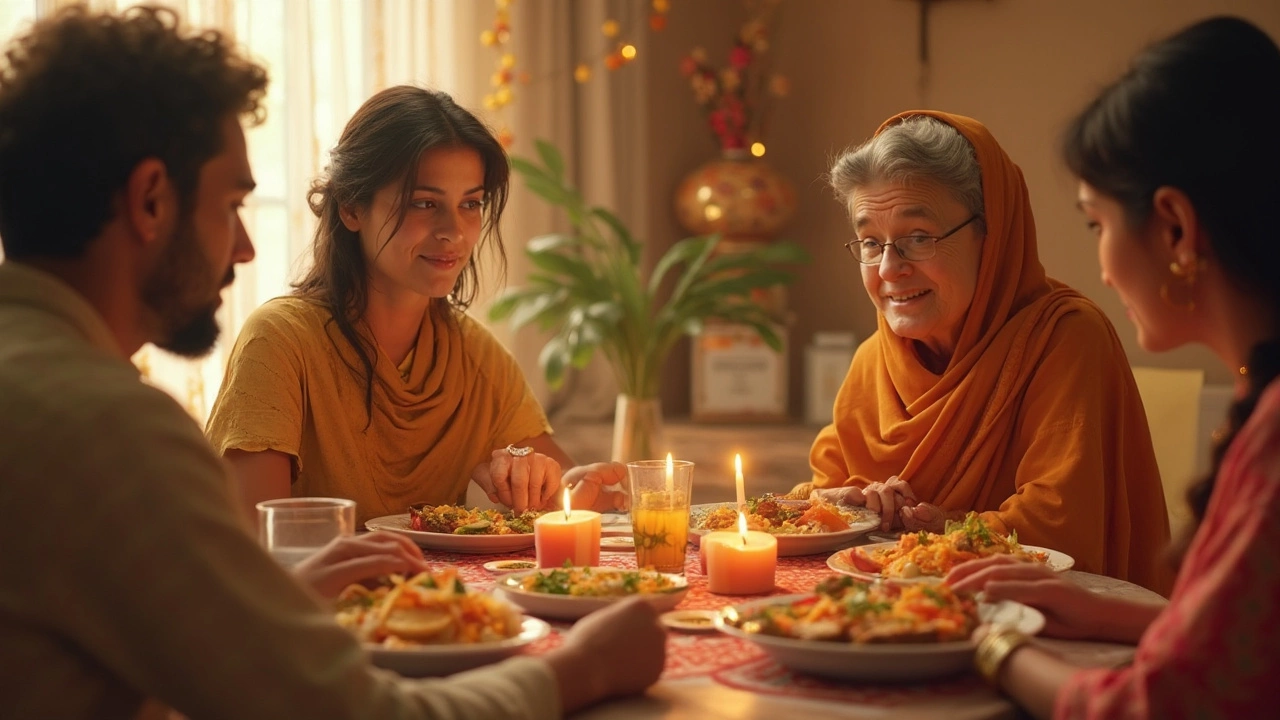
Living Well with an Incurable Diagnosis
Getting told you have an incurable cancer is a punch in the gut. But believe it or not, life doesn’t have to stop because the cancer can’t be fully cured. Many people live for years with terminal cancer, thanks to better treatments and supportive care.
Doctors now focus a lot on ‘quality of life.’ This goes way beyond just adding extra months to your calendar. It’s about helping you feel less pain, manage side effects, and still enjoy what you love. For example, someone with advanced lung cancer might get targeted drugs that shrink tumors and kick symptoms to the curb, even if those drugs don’t promise a cure.
If you’re dealing with cancer that has no cure, here are some ways people make the most of things:
- Active symptom management: Oncologists use meds, physical therapy, and even counseling to keep pain, nausea, and fatigue under control. The fewer side effects you have, the more you can do.
- Palliative care: This isn’t just about the end — it’s support at any stage. Teams work with you for pain relief, emotional support, and help with tough decisions.
- Stay social: Friends, support groups, and family really help your mood and motivation. Studies out of MD Anderson showed people with good social ties report better day-to-day health, even with aggressive cancers.
- Plan for what matters: People often focus more on what’s meaningful — spending time with family, traveling, or creating memories. Don’t be shy about shifting priorities.
- Trial options: Some participate in clinical trials for new drugs or treatments. Even without a cure, these options might give you more time or better comfort than the standard fare.
Check this glimpse into how ongoing care stacks up for those living with terminal cancer:
| Approach | Average Survival After Diagnosis | Main Benefit |
|---|---|---|
| Standard treatments (chemo, radiation) | 1-3 years (varies by cancer) | Can slow tumor growth, ease symptoms |
| Palliative care (with treatment) | Similar, sometimes slightly longer | Improves comfort and emotional well-being |
| New targeted therapies | Up to 5+ years for some cancers | May control cancer with fewer side effects |
Bottom line? Incurable cancer isn’t the end of the road for joy, goals, or connection. With the right mix of medical help and support, many keep doing what matters to them, even while managing a tough diagnosis.
